*FYI - this post may contain affiliate links, which means we earn a commission at no extra cost to you if you purchase from them. Also, as an Amazon Associate I earn from qualifying purchases. Check out our Privacy Policy and Disclosure. for more info.
In a destination as beloved by tourists as Bavaria, it’s tough these days to find anywhere that remotely qualifies as a ‘hidden gem’ or surprise… after all, this is the German Bundesland containing tourist favourites like Neuschwanstein Castle, Rothenburg ob der Tauber, Nuremberg & Munich… so its merits are hardly a secret in the world of travel.
And, admittedly, after 5+ years living in Munich, I thought I had seen every worthwhile Bavarian day trip there was… That is, until I found myself in the capital city of the supremely underrated Lower Bavaria, Landshut – a place known to few overseas tourists, despite its proximity to Munich’s Airport.
Landshut (pronounced Lahn-soot) is a quiet fairytale town with a modern edge, like an accidentally storybook place that doesn’t care much to milk its magic for tourism. Though it gets its fair share of visitors during its signature “Landshuter Hochzeit” event every four years, it’s otherwise fairly quiet on the tourist front, in spite of its lovely hilltop castle, and gigantic brick church tower that’s the tallest of its kind in the world!
So what is there to do in Landshut? Read on for a roundup, from historic must-sees to fun naked surprises.
1. Martinskirche (St Martin’s Church)
Let’s start with a big one – quite literally. Over at Martinskirche (St Martin’s Church), you’ll find a glorious medieval church with the distinct bragging right of ‘world’s tallest brick structure’.
Yup, the church’s iconic brick tower looms over the city at 130m tall, dominating the Landshut skyline with impressive authority.
That’s not all, of course! The inside of the church offers soaring vaults, elegant Gothic arches, slender columns and expansive stained glass windows. It’s also home to several notable artworks, including an intricately carved wooden altarpiece and a collection of medieval sculptures.

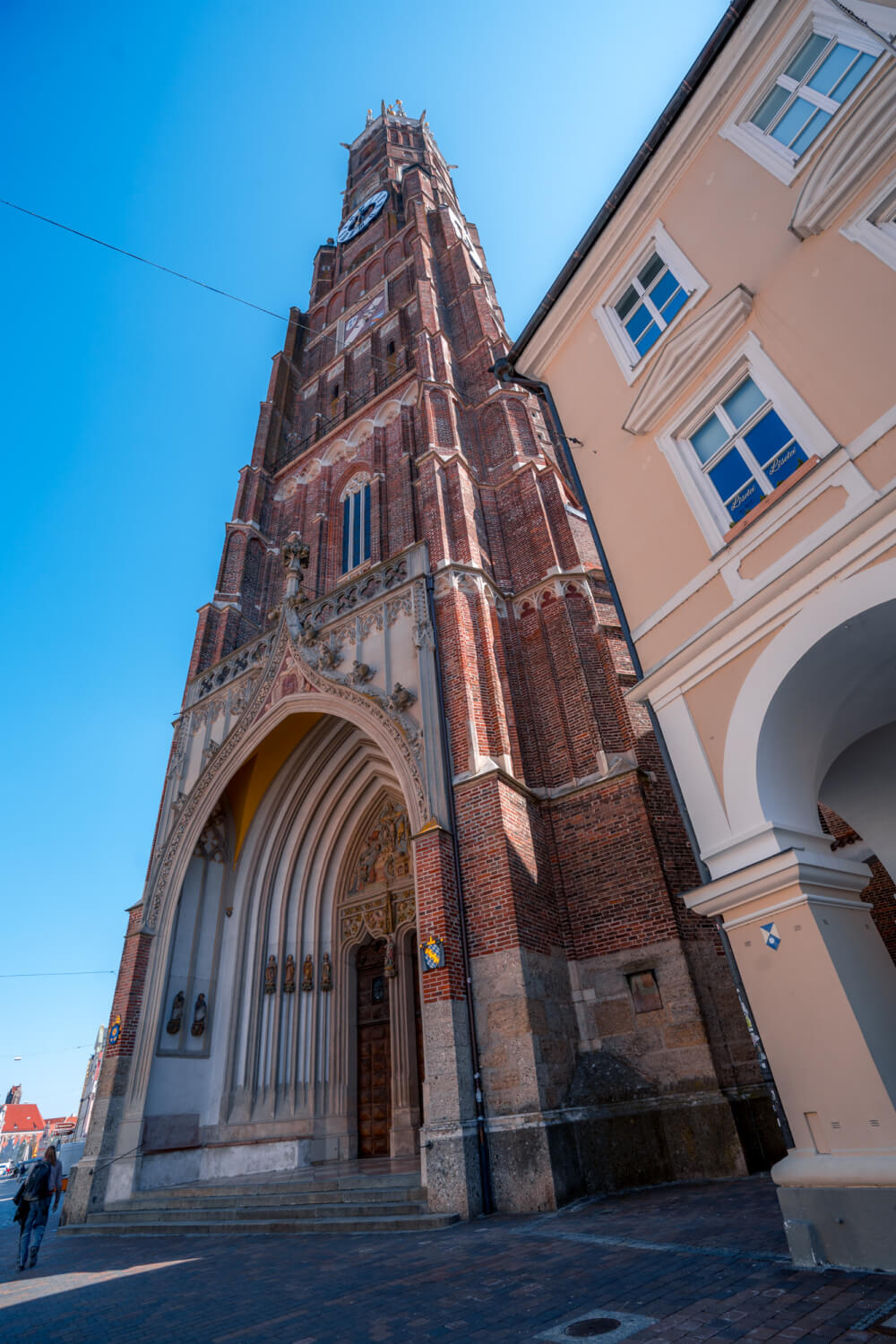
BONUS TIP: When my friend and I were taking photos of the church from the front, we were approached by a friendly local who told me he wanted to show me a hidden church secret!
Though it sounded kidnappy, it was broad daylight so we followed him around the church until he beamed at us and said “NAKED JESUS!!” To this day, I’m not sure what to do with that information so here I am passing it to you. Do know that behind the church here, you too can go see this locals’ proud secret.

2. Landshuter Rathaus
The Landshuter Rathaus, or Town Hall, is a prominent historical and architectural landmark which stands proudly on the city’s main square.
The construction of the Landshuter Rathaus began in the 14th century and continued into the 15th century, mostly by merging three separate Gothic houses into one structure. The result is a splendid blend of Gothic and Renaissance architectural styles. The building’s exterior is characterized by its impressive façade, adorned with ornate decorations, pointed arches, and a distinctive clock tower that has become an iconic symbol of the city.
In addition to its administrative functions, the Landshuter Rathaus serves as a cultural hub, hosting exhibitions, concerts, and community gatherings. A highlight if you see the inside is the mural depicting the Landshuter Fürstenhochzeit, a wedding celebration for the marriage of Duke George of Bavaria and Princess Hedwig Jagiellon of Poland in 1475 (more on that later!).
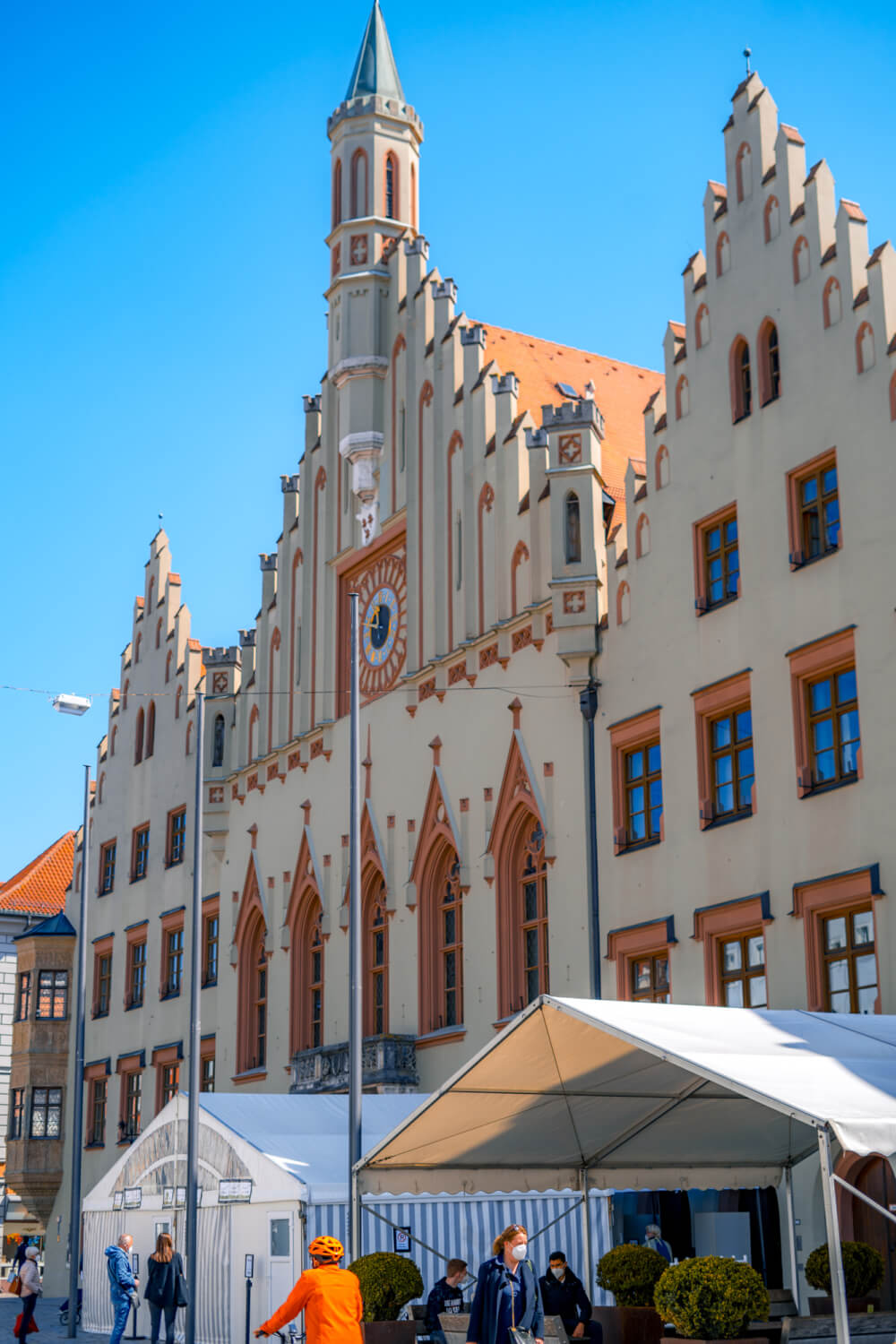
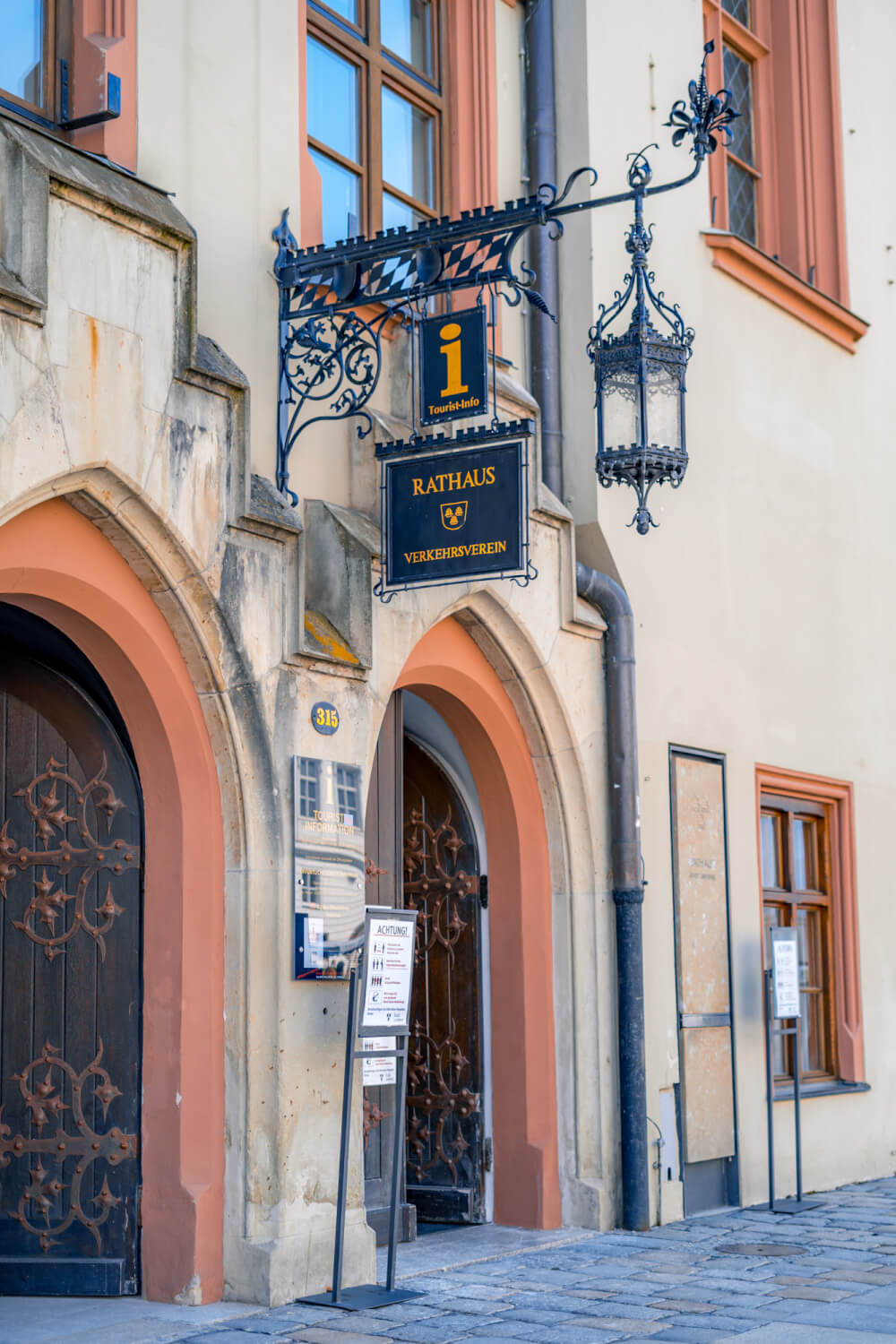
3. Landshuter Residenz
While the Landshuter Residenz might not look that amazing from outside, this is actually the main palace of Landshut, and a striking example of Renaissance design.
The Residenz was commissioned by Duke Ludwig X of Bavaria and constructed between 1536 and 1543. It was one of the first Renaissance buildings in Germany, designed to reflect the new architectural style that was sweeping through Europe. The main building is actually called the German Building, while an additional Italian Building was added after the Duke was inspired on a trip to Italy.
Inside, the palace boasts a series of richly decorated rooms and halls, each adorned with intricate frescoes, stucco work, and period furnishings. Today, the Landshuter Residenz is open to the public as a museum, allowing visitors to explore its exquisite architecture and historical artifacts.
It’s also located directly across the road from the Rathaus, so you can easily check off both buildings from your list of must-sees in Landshut in one go!

4. Landschaftshaus
A bit further down the road from the Rathaus and Residenz is another impressive building worth checking out, the Landschaftshaus, or “Country House,” which played an important role in the region’s administrative history.
Constructed in the late 16th century, the Landschaftshaus served as the headquarters for the Landschaft, a regional assembly that represented the interests of the Bavarian estates, including the nobility, clergy, and townspeople. Over the years this building was later used as the post office, and there’s still a little “Alter-Post Passage” which goes through it to a little courtyard behind the building and then connects to Ländgasse.
The coolest part about this building is, of course, the paintings all along the exterior, which were done by Hans Georg Knauf and apparently depict different Bavarian princes. There are also a few different shops to check out in the building today, including a nice bookshop.

5. Neustadt
Neustadt is one of the main streets in Landshut, flanked on both sides by pretty pastel buildings and views up the hill to Trausnitz Castle.
While the name means new, it was actually constructed around the 13th century, but as part of the expansion of the original city. Unlike the older parts of Landshut, which feature winding medieval streets, Neustadt was planned with a more organized and spacious layout.
Today it’s part of the historic old town area, just to be extra confusing! There are lots of pretty shops to have a look at here, as well as art galleries, cafés, restaurants and hotels.
PS: If you time your visit for a Friday, you can find the city’s weekly market here, with plenty of opportunities to buy fresh produce and goodies.
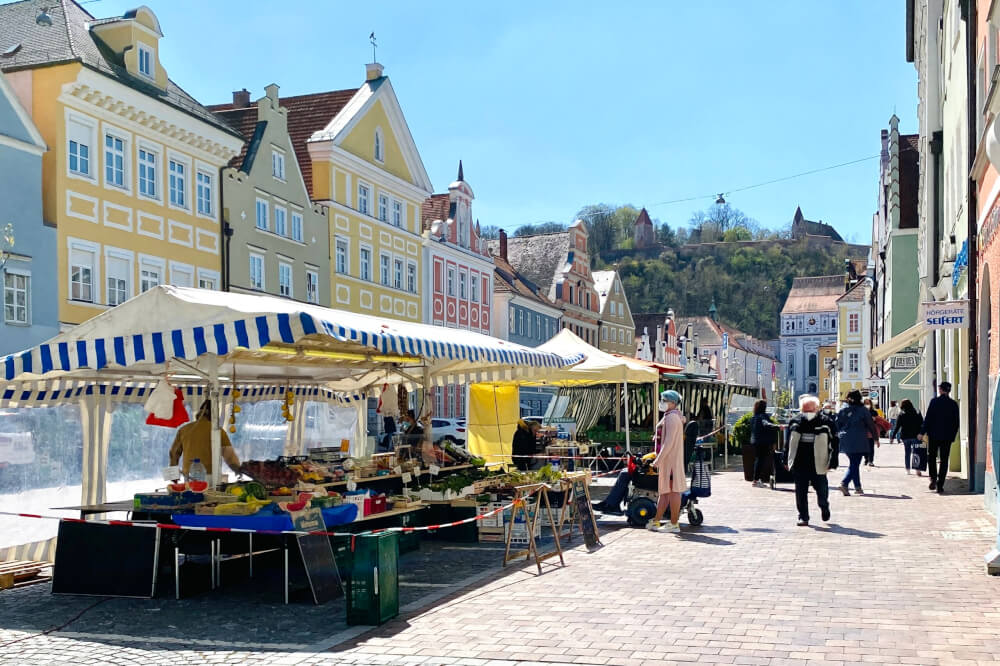
6. The old city walls
Once upon a time, Landshut would have been a walled city which grew quickly in importance thanks to its strategic location along the Isar River, which facilitated trade and commerce.
The city walls of Landshut were built in the 13th century as a defensive measure to protect the burgeoning town from external threats. These fortifications included thick stone walls, fortified gates, and watchtowers, and nowadays a handful of remnants remain, so be sure to take note of these during your visit!
Some highlights include…
- Röcklturm: A former defensive tower that now hosts exhibitions.
- Ländtor: The only still standing gate from the medieval walls.
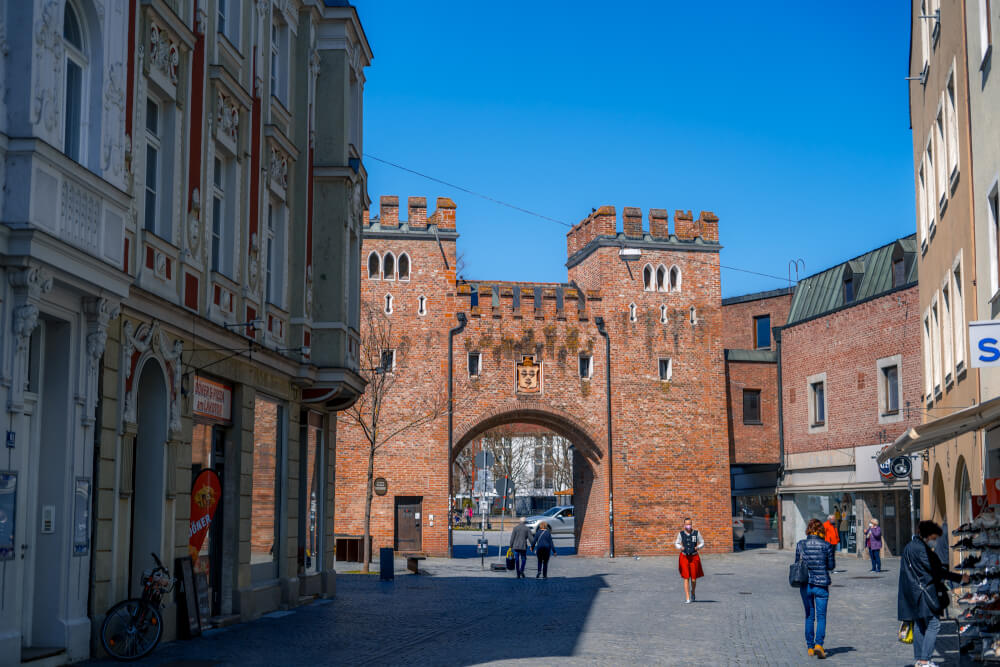
7. Burg Trausnitz (Trausnitz Castle)
Adding to Landshut’s fairytale charm is its very own castle on a hill, namely Burg Trausnitz, a majestic medieval fortress that was founded in 1204 by Duke Ludwig I of Bavaria.
Trausnitz Castle played a crucial role in the political and military affairs of the region, acting as both a stronghold and a symbol of ducal power. The castle’s architecture is a captivating blend of medieval, Gothic, and Renaissance styles. The original medieval fortress featured robust defensive structures, including thick walls, towers, and a drawbridge. In the 16th century, under the reign of Duke Ludwig X, Trausnitz was transformed into a splendid Renaissance residence.
One of the most notable features of Trausnitz Castle is the Knight’s Hall (Rittersaal), a grand room adorned with intricate woodwork and paintings that depict scenes from throughout Bavarian history. There’s also a “Fool’s Staircase” painted with life-size scenes from the Italian Commedia dell’arte.
While the uphill slog takes a surprising amount of effort, you’re rewarded with great views up top, so I’d say it’s definitely worth the detour when you’re in Landshut.
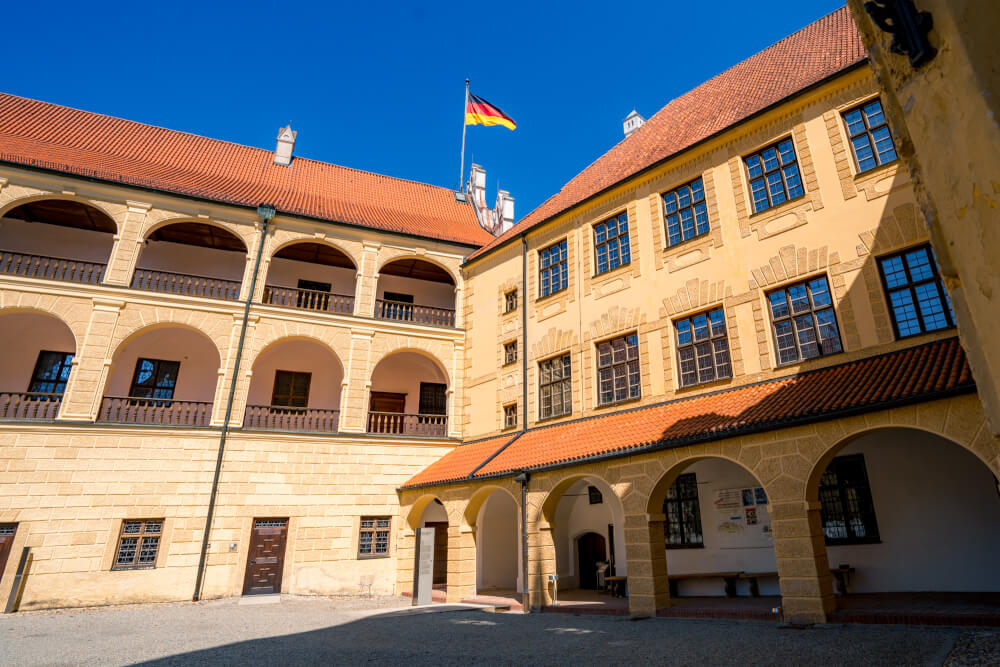
While here, don’t miss the Landshuter Hofgarten, where you can scope out amazing views over the city like this.

8. KOENIGmuseum (Formerly Skulpturenmuseum im Hofberg)
Another fun Landshut activity for art lovers is the KOENIGmuseum (formerly known as the Skulpturenmuseum im Hofberg) a museum dedicated to the works of the renowned German sculptor Fritz Koenig.
This museum was originally dedicated to exhibiting a wide array of sculptures from various artists. However, in recent years, it has been rebranded and refocused as the KOENIGmuseum to highlight the extensive works of Fritz Koenig, who was one of Germany’s most important post-war sculptors.
Fritz Koenig (1924-2017) is celebrated for his powerful and expressive sculptures, which often explore themes of human suffering and resilience. His most famous work is “The Sphere,” which stood at the World Trade Center in New York City and survived the 9/11 attacks. This sculpture became a symbol of resilience and was later relocated to Battery Park in New York as a memorial.
If you’re interested in seeing more of his works in a beautiful setting, make sure you add this museum to your Landshut list.
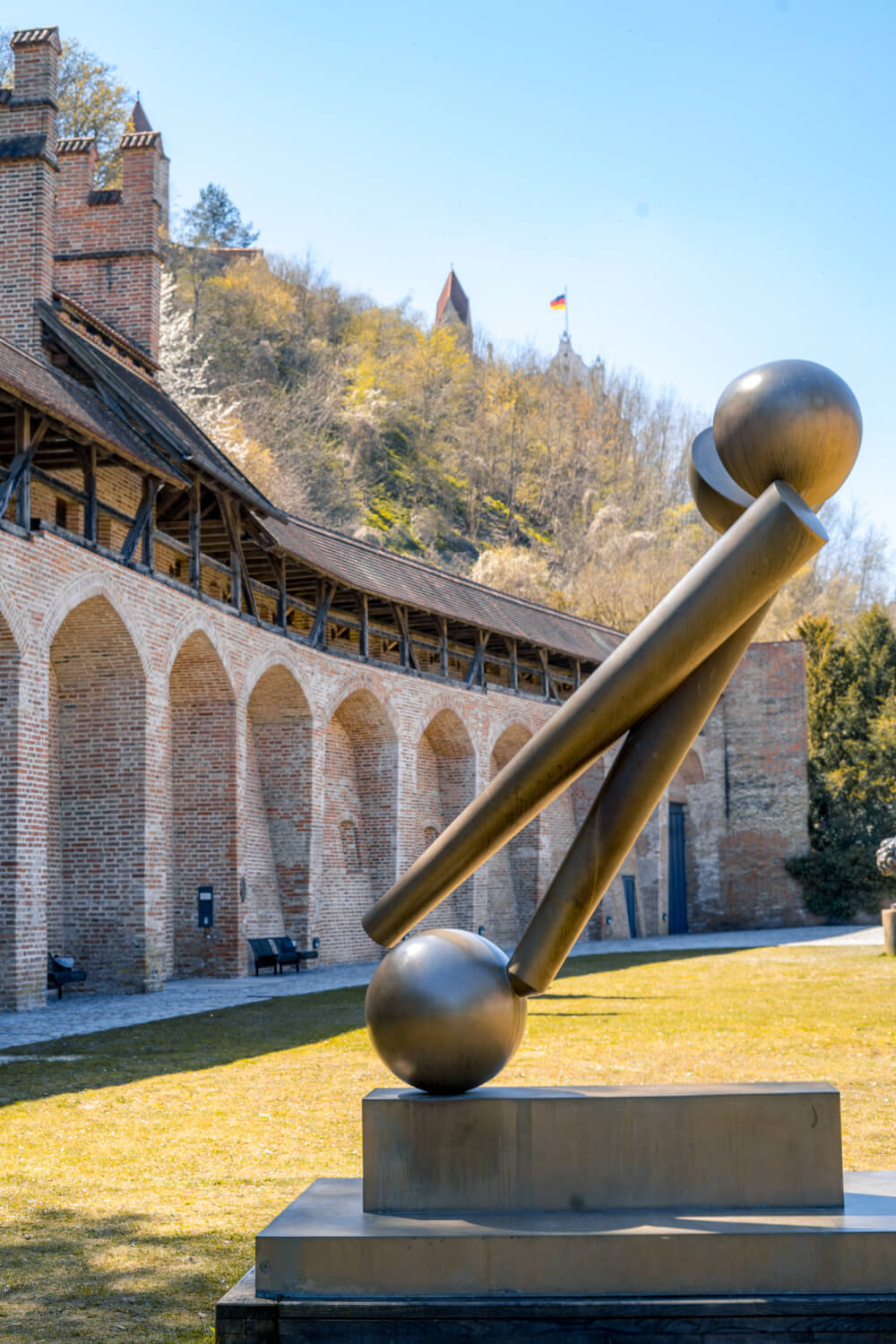
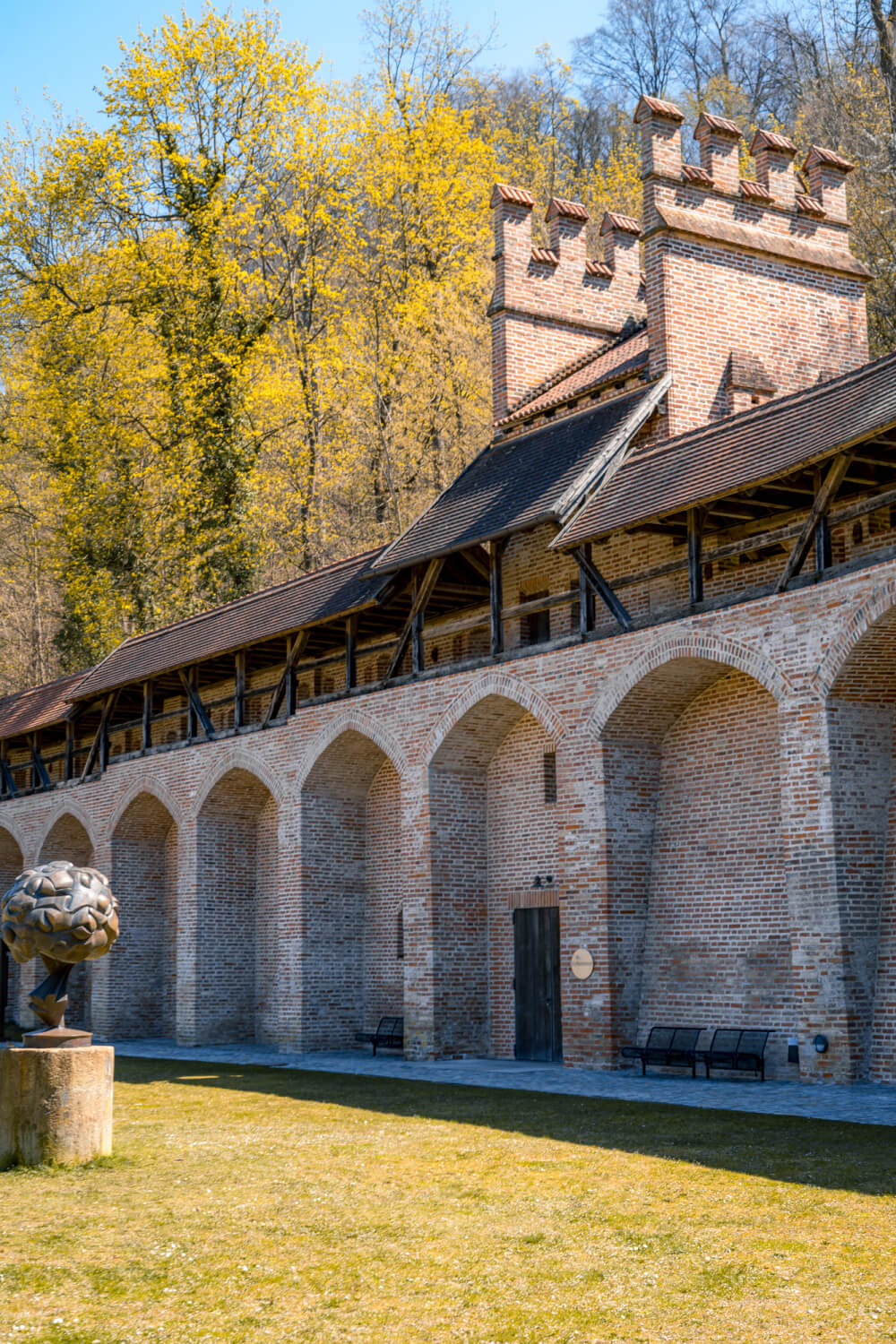
9. Stroll along the Isar
On a sunny day, there are few better things to do in Landshut than a quiet walk along the riverside, probably the most idyllic spot in the city.
The gorgeous Isar River flows through Landshut and splits into two in the city centre, offering plenty of opportunties for riverside bumbling. The Isarpromenade is a popular choice and definitely where I’d go if I only had a short time to explore this part of the city.
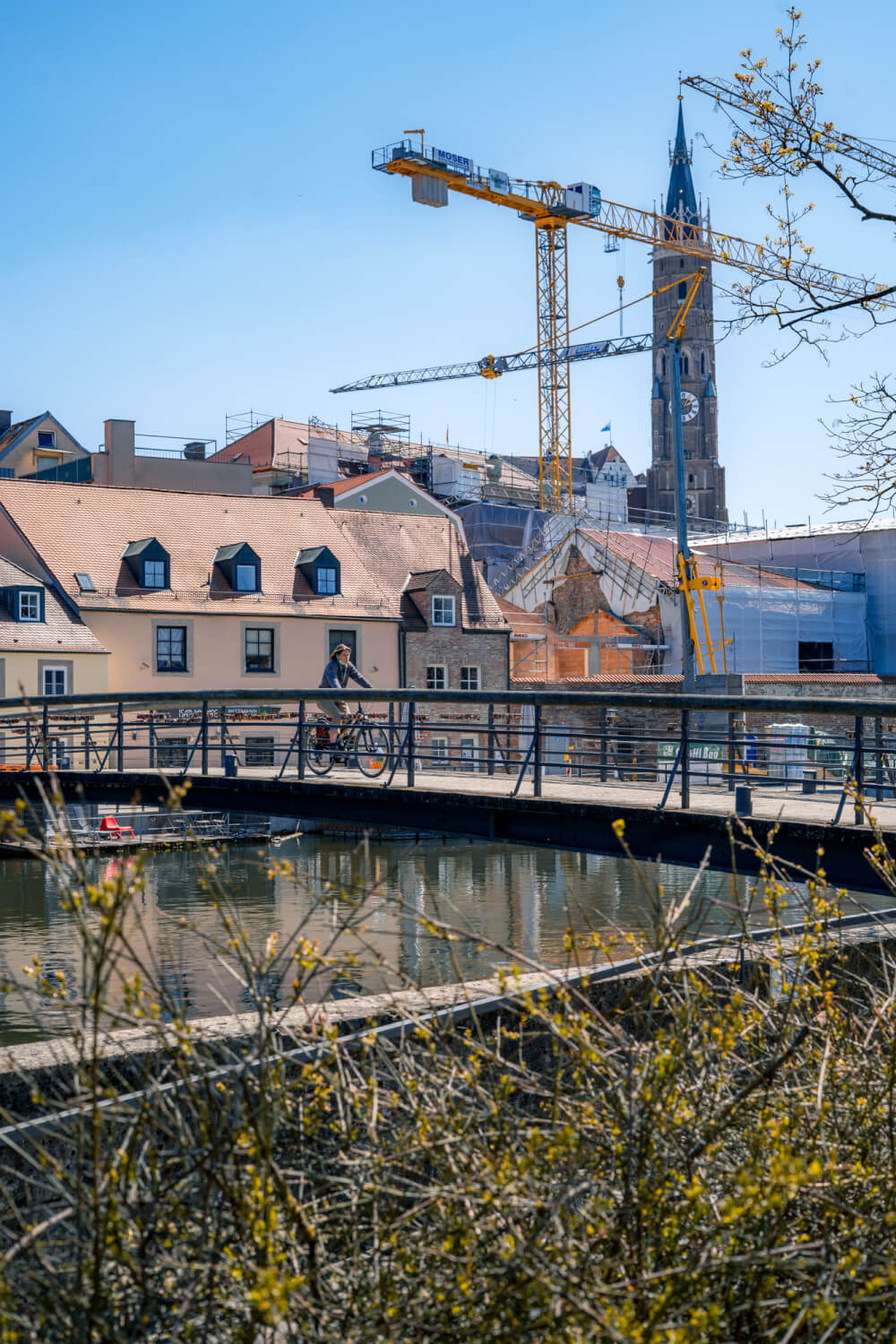
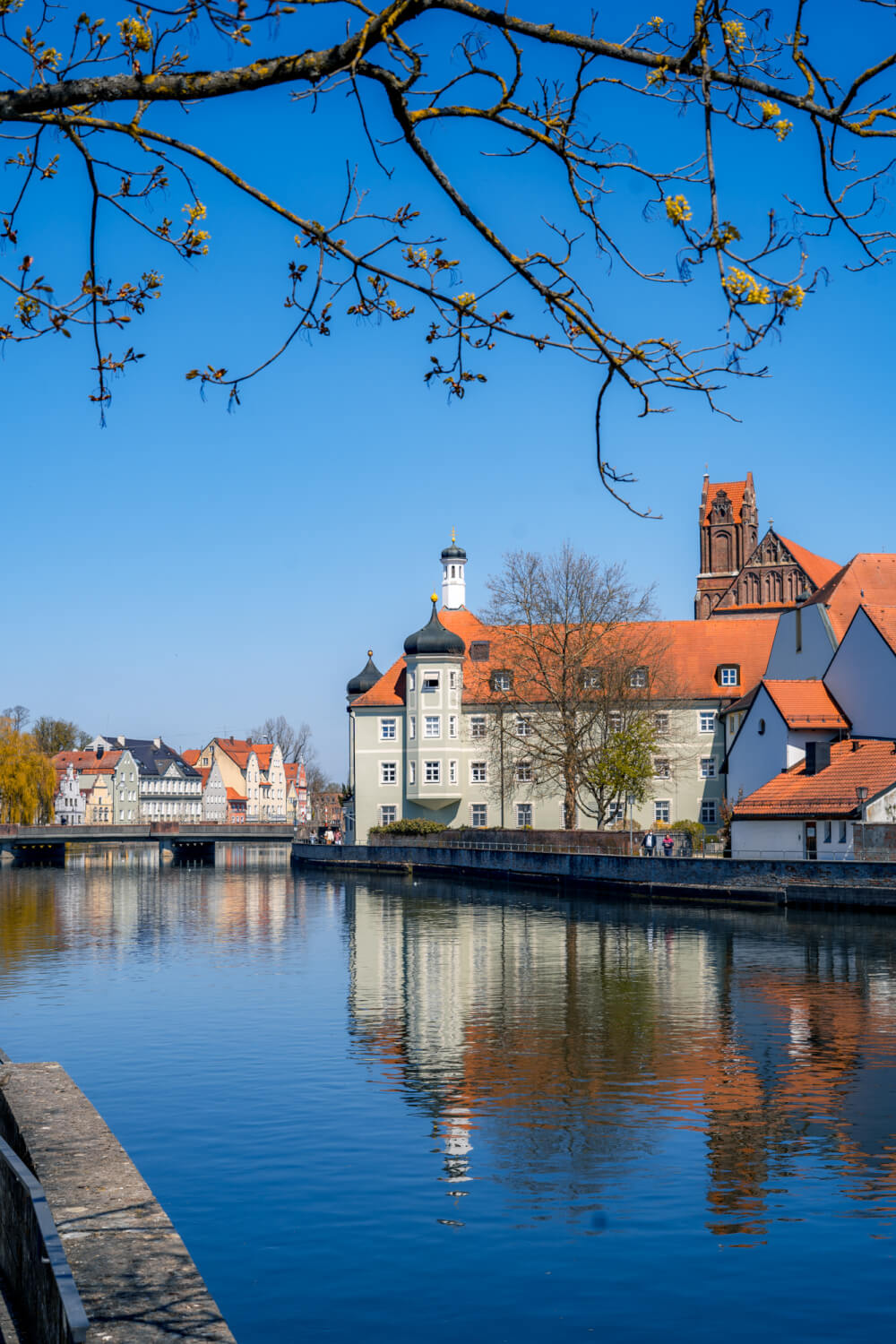
NOTE: If you’re looking for a tasty place to grab a cheap bite, the Döner am Landtor had some really delicious handmade falafel and pita – perfect for picnicking by the river.

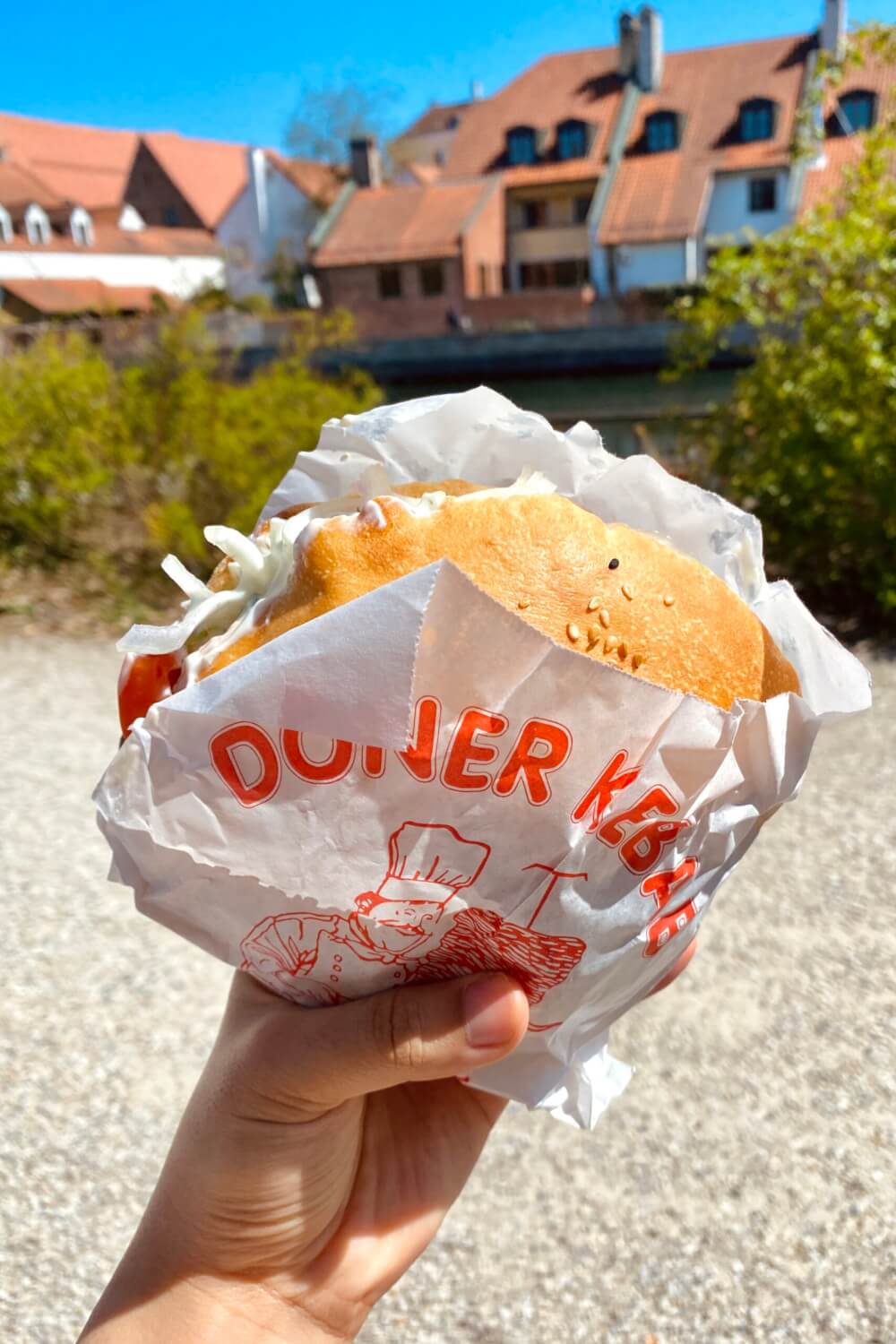
10. Attend the Landshuter Hochzeit
Now, though it only takes place every four years (the next being 2027), it’s worth mentioning THE ultimate thing to do in Landshut: the Landshuter Hochzeit (Landshut Wedding), AKA the largest medieval history play in Europe.
This grand event is a spectacular historical re-enactment celebrating the marriage of Duke George of Bavaria and Princess Hedwig Jagiellon of Poland in 1475. The original wedding was a lavish affair that symbolized the alliance between Bavaria and Poland. It was marked by a series of grand festivities including jousting tournaments, feasts, parades, and music.
To honour this significant historical event, the Landshuter Hochzeit brings the past to life with meticulous attention to detail. The festival spans several weeks, featuring a wide array of events that immerse visitors in the medieval atmosphere. Participants don elaborate period costumes, and the city is transformed with decorations reminiscent of the 15th century.
Highlights include the grand wedding procession, where over 2,000 costumed participants march through the streets of Landshut, and the spectacular jousting tournaments held in the tournament arena. There are also medieval markets, musical performances, and theatrical plays that recreate the ambiance of the era.
It’s definitely one event worth timing your trip to Landshut for!
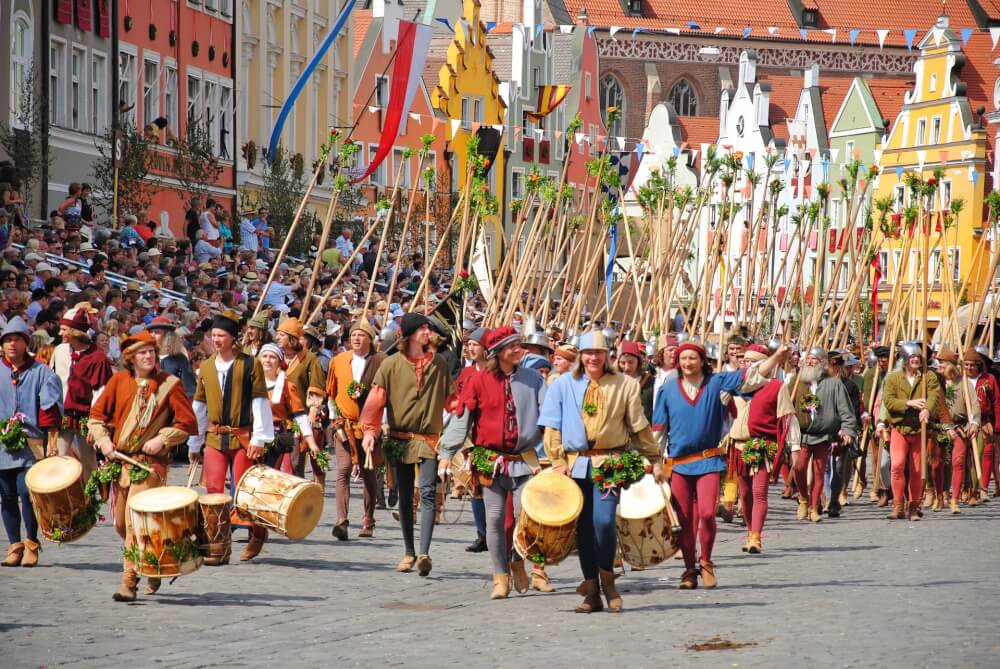
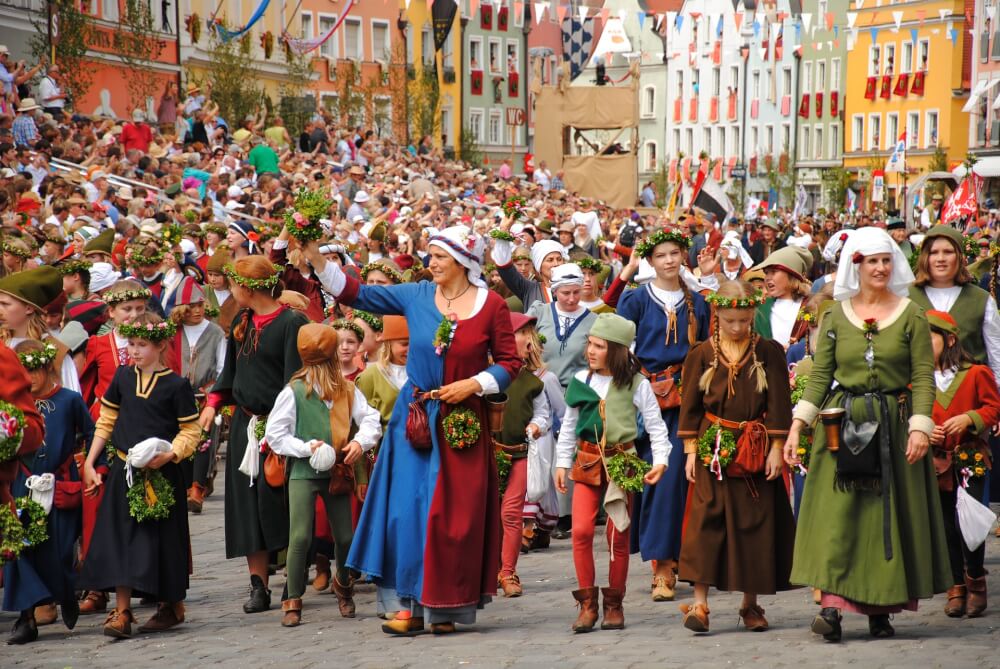
11. Visit other great destinations nearby
Finally, it’s worth noting that one of the most wonderful things about Landshut is its location close to so many other worthwhile destinations. If time allows, some other spots I’d recommend extending your adventure to include…
- Passau: Read my list of things to do in Passau for more
- Munich: Read my list of things to do in Munich for more
- Regensburg: Read my list of things to do in Regensburg for more
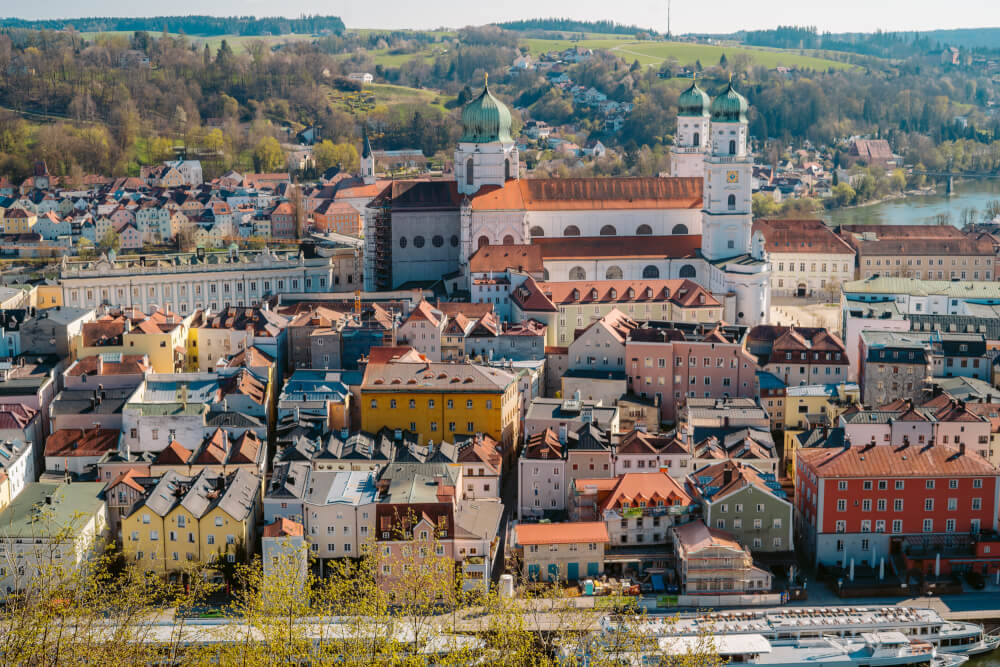
Did I miss any of your favourite things to do in Landshut?
Let me know in the comments so I can add more of the best Landshut activities to the list. Happy and safe travels! 🙂

